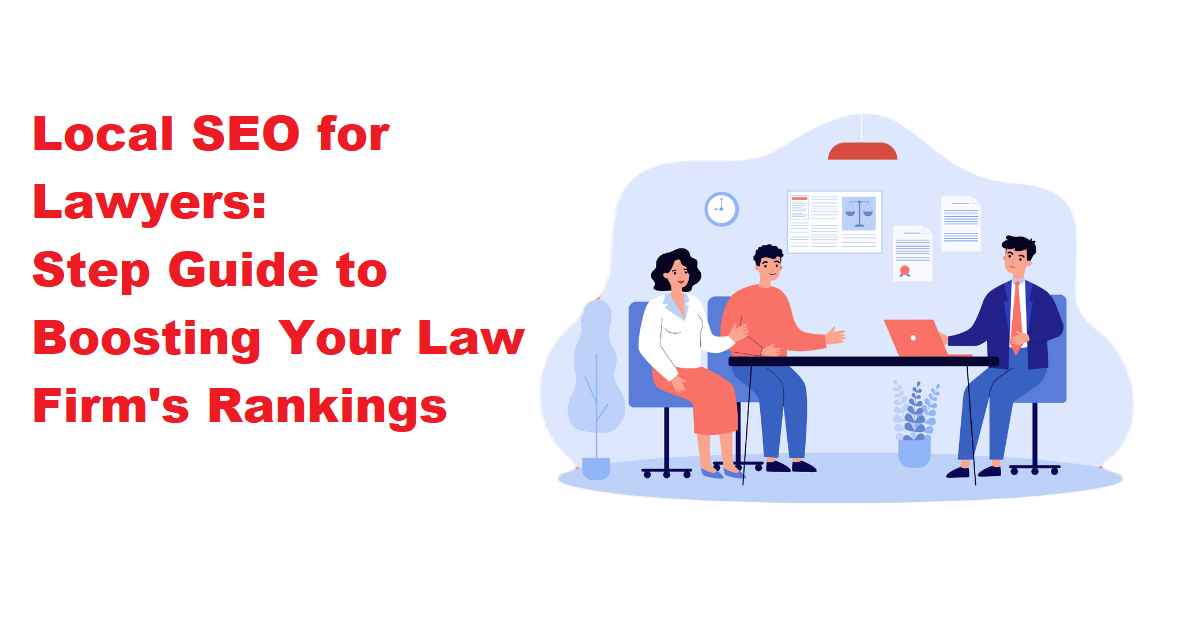Local search engine optimization (SEO) is crucial for lawyers and law firms looking to enhance their online presence and attract clients within their local area. With the majority of people turning to the internet to find legal services, it’s essential to ensure your law firm ranks well in local search results.
What is Local SEO for Lawyers?
Local SEO, or Local Search Engine Optimization, focuses on optimizing online content for searches with a local intent. When people use search engines like Google to find answers to their questions, they often include location-specific keywords. These queries are how individuals seek out local products, services, or information. Consider the frequent instances when you’ve searched for “gas station near me” or “restaurant near me.” These are prime examples of local search queries.
Local search queries can trigger specific local results, including maps and nearby businesses. For attorneys and legal practices catering to specific geographical areas, this aspect of local SEO is particularly significant. In the context of local SEO for lawyers, these searches can encompass a wide range, from queries like “immigration lawyers near me” to broader ones such as “lawyers in Seattle,” with countless variations in between.
Why Local SEO Matters for Lawyers
Local SEO is the process of optimizing your online presence to improve your visibility in local search results. For lawyers, this means ensuring that potential clients in your geographic area can easily find your services when they search for legal assistance online.
Here are a few reasons why local SEO is essential for lawyers:
- Targeted Audience: Local SEO allows you to target potential clients who are specifically looking for legal services in your area. This ensures that you are reaching the right audience, increasing the chances of converting visitors into clients.
- Competitive Advantage: Many law firms compete for the same clients in a given location. Effective local SEO strategies can give you a competitive edge by ensuring that your practice appears at the top of local search results.
- Improved Online Reputation: Local SEO efforts often involve managing online reviews and ratings. Positive reviews can boost your reputation and credibility in the eyes of potential clients, making them more likely to choose your services.
Understanding Google’s Ranking Factors
There are four primary ranking factors that your website will have to prioritize in order to rank in top spots on Google and achieve SEO success. These factors are:
(1) content,
(2) link-building,
(3) technical SEO,
(4) user experience (UX).
We’ll take a deeper look at each one of these below. We will also discuss these factors again in the next section, “Google Ranking Factors.”
-
CONTENT
Content refers to the practice area pages, blogs, resources, images, and videos on your law firm’s website. It’s how you convey information to potential clients and is a critical factor in ranking highly on Google’s search engine result pages. Below, we discuss how to create compelling content that will improve your website’s rankings and appeal to users.
YOUR CONTENT NEEDS TO ADDRESS USERS’ KEYWORD SEARCHES AND QUERIES.
Your law firm’s website should contain high-quality, helpful content that answers potential clients’ questions and keeps them engaged. What search terms are they using when researching your area of law? Does your website clearly answer questions they may have regarding your practice areas and legal services? For example, if you’re a personal injury lawyer in Tampa, think about what an accident victim in your area would search for on Google. When you’re creating content, consider the following:
- Does your website conspicuously indicate that you practice personal injury law in Tampa?
- Do you list and explain your personal injury law practice areas (e.g., car accidents, slip and fall accidents, medical malpractice, premises liability, etc.)?
- Is it evident that your law firm has successfully handled personal injury claims in the past? You should list past case results, client reviews, and credentials.
- Do you discuss your legal fee structure (e.g., contingency fees)?
- What would a potential client visit your website to learn? Make sure you answer their possible questions clearly and concisely (e.g., how long does it take to settle a personal injury claim?).
- Is your content up to date? For example, if your site lists car accident statistics, update them regularly. Google places authoritative, relevant content at the top of its search engine rankings. If you address the topics above, your website will be useful to users – and Google will be more likely to feature it higher in search results.
YOU NEED TO OPTIMIZE YOUR CONTENT WITH KEYWORDS.
Listing helpful content that answers prospective clients’ questions is essential, but you need to consider how Google evaluates a user’s intent when searching for something online. Google uses the RankBrain AI system to understand and interpret user intent. It scans websites for keywords (e.g., “Tampa personal injury lawyer”), positive user signals, and relevance. It uses this information to figure out what people want to know and the results it will provide. Therefore, each web page needs to indicate the target keywords clearly so that users and RankBrain know what they’re about. A properly optimized page should include your target keywords in the title, the content, the meta tag, the headings and subheadings, and the URL. You should also use tools like Google Search Console and Google Analytics to further optimize your page.
YOUR CONTENT SHOULD ADDRESS MULTIPLE KEYWORDS WITHIN THE SAME CATEGORY.
Not everyone searches for topics the same way. One person may search for a “Tampa personal injury lawyer,” while another may search “do I need a personal injury lawyer in Tampa after a car accident?” If optimized correctly, your content will have a primary keyword and include variations and long-tail keywords to direct more traffic to your website and help you get more leads. Blogs are a good way to implement long-tail keywords on your site. It’s important to remember that great content is at the heart of any SEO campaign and could require a significant budget.
-
BACKLINKS
You may have great content, but how is Google supposed to know it’s great? Moreover, how does the search engine know that other users find your content trustworthy and authoritative? One key way is through “backlinks.” Backlinks arise when another website links to your content and points users to your site. Google views backlinks work as a vote of confidence for your content.
The more high-quality backlinks your website gets, the more trustworthy your content appears to Google. A backlink is high-quality when:
- It is placed within the content — not a sidebar or footer
- It comes from a website with a high domain authority
- The linking web page has a low number of outgoing links (a backlink from a website with dozens of outgoing links is less valuable than one from a website with a few outgoing links)
- The anchor text linking to your site is relevant to your content If your website has minimal or low-quality backlinks, Google may view your website as having low credibility and authority.
YOU CAN ELEVATE YOUR LOCAL SEO THROUGH LINK BUILDING.
Backlinks provide a valuable way to elevate your law firm’s local SEO. The contact information for your law office is likely displayed in many places online. You can optimize your local SEO by obtaining backlinks from sites and platforms that contain your contact information, including:
- Social media platforms such as Facebook, LinkedIn, and Twitter
- Legal directories, including Avvo, Justia, and Martindale-Hubbell
- Google My Business
- Reviews on third-party websites This local SEO can enhance your efforts to appear in Google’s local map pack.
-
TECHNICAL SEO
Technical SEO refers to strategies to make your website content more friendly or recognizable to search engines. You should optimize each web page to help improve your overall rankings. This means using:
- Header tags
- Title tags
- Alt text for images
- Internal and external links
- URL structure
- Site architecture And more. You can consult Google’s SEO guidelines for ways to improve your technical SEO. Site structure tends to be one of the most important components of technical SEO because it influences everything else. Google may fail to crawl and/or index your web pages if you have a poor site structure. A flat structure tends to be best for SEO. A flat structure ensures your site’s pages are only ever a few links away from one another, which makes it easier for Google to crawl all your web pages and content.
-
USER EXPERIENCE
User experience (UX) is another SEO ranking factor Google considers. User experience is a broad term that encompasses how a potential client will feel and respond to your website. It refers to:
- How easily a visitor can navigate your site,
- How visually appealing your site is, and
- How well your site is performing in terms of responsiveness, to name a few examples. As it relates to SEO, Google makes it fairly clear as to what it is looking for when it comes to UX. There are four categories of considerations related to UX that Google mentions, which we’ll briefly cover here.
CORE WEB VITALS
Core web vitals are a set of performance metrics you can use to determine how well your website is operating. In essence, Core Web Vital measures the speed at which your site downloads and a user can begin interacting with it. There are three primary tools you can use to measure your website’s performance in this way:
- Largest Contentful Paint (LCP): This tool measures the loading performance of your website. Google states that for a good user experience, you should aim to have LCP occur within 2.5 seconds of the page’s loading.
- First Input Delay (FID): This is a tool that measures the interactivity of your website. You should aim to have an FID of less than 100 milliseconds, according to Google.
- Cumulative Layout Shift (CLS): This last primary tool Google mentions will measure the visual stability of your site. Google states that you should aim to have a CLS score of less than 0.1. Google has also made this comprehensive guide available that offers further advice on measuring and monitoring your Core Web Vitals.
MOBILE-FRIENDLY
A mobile-friendly website is essential to UX in this day and age. Google offers this Mobile-Friendly Test which you can use to determine whether your page is working effectively for mobile users. You’ll want to make sure that your website loads quickly and loads accurately on a number of different screen sizes.
HTTPS
You will want to make sure that your website is served over HTTPS, which you can verify by following the instructions on this page. HTTPS improves the security of your website. If your website is not currently served over HTTPS, you can use this tool provided by Google to secure it.
NO INTRUSIVE INTERSTITIALS
The content on your website should be easily accessible to all users. Intrusive interstitials and dialogs are elements of your website that obstruct the user’s view of the content. Intrusive interstitials are overlays that cover the entire webpage, while dialogs may only obstruct some of the content. These can be detrimental to the UX of your website and may even frustrate users at times. In addition, these overlays and dialogs can make it harder for Google to analyze your site’s content, making it more difficult to achieve a higher SEO ranking.
UX is a critical component of your SEO and overall marketing strategy as a lawyer. An easy-to-use, fast-performing, visually-appealing website will help ensure that Google views your content favorably and that potential clients turn into actual clients.
Key Local SEO Elements for Lawyers
To succeed in local SEO for lawyers, need to focus on several critical elements:
-
Optimize Your Google My Business (GMB) Profile
Your Google My Business profile is the cornerstone of your local SEO strategy. Make sure it’s complete and up to date. Include accurate contact information, business hours, photos, and a compelling description. Encourage clients to leave reviews, and respond to them promptly to build trust and credibility.
-
Keyword Research
Identify the keywords potential clients use when searching for legal services in your area. Use keyword research tools to discover relevant keywords and phrases, and integrate them naturally into your website’s content. Consider long-tail keywords to target specific legal services you offer.
-
Create High-Quality, Local Content
Develop informative, engaging, and locally relevant content on your website. This could include blog posts, articles, case studies, and videos. Showcase your expertise in the local legal landscape, addressing common legal issues in your region.
-
Mobile Optimization
Ensure your website is mobile-friendly. Google prioritizes mobile-friendly websites in search results. A responsive design will not only improve your rankings but also enhance the user experience.
-
Local Link Building
Build a network of quality backlinks from authoritative local websites. Reach out to local businesses, organizations, and directories to establish partnerships and obtain backlinks. High-quality backlinks are essential for local SEO success.
-
On-Page SEO
Optimize your website’s on-page elements, including meta titles, meta descriptions, header tags, and alt text for images. Ensure that each page of your website is optimized for relevant keywords and provides valuable information to users.
-
NAP Consistency
Maintain consistent NAP (Name, Address, Phone number) information across all online platforms and directories. Inaccurate or inconsistent information can confuse search engines and potential clients.
-
Local Schema Markup
Implement schema markup to provide search engines with structured data about your law firm. This helps search engines better understand your business and can lead to rich snippets in search results.
-
Monitor and Analyze Performance
Regularly monitor your local SEO performance using tools like Google Analytics and Google Search Console. Track keyword rankings, website traffic, and user behavior. Use these insights to refine your strategy and make necessary adjustments.
Conclusion
Investing time and effort into improving your law firm’s local SEO is a wise decision in today’s digital age. By following these nine steps, you can enhance your local rankings, increase your online visibility, and attract more clients within your local area. Remember that local SEO is an ongoing process, so stay committed to optimizing and adapting your strategy as needed to stay competitive in the legal landscape.







